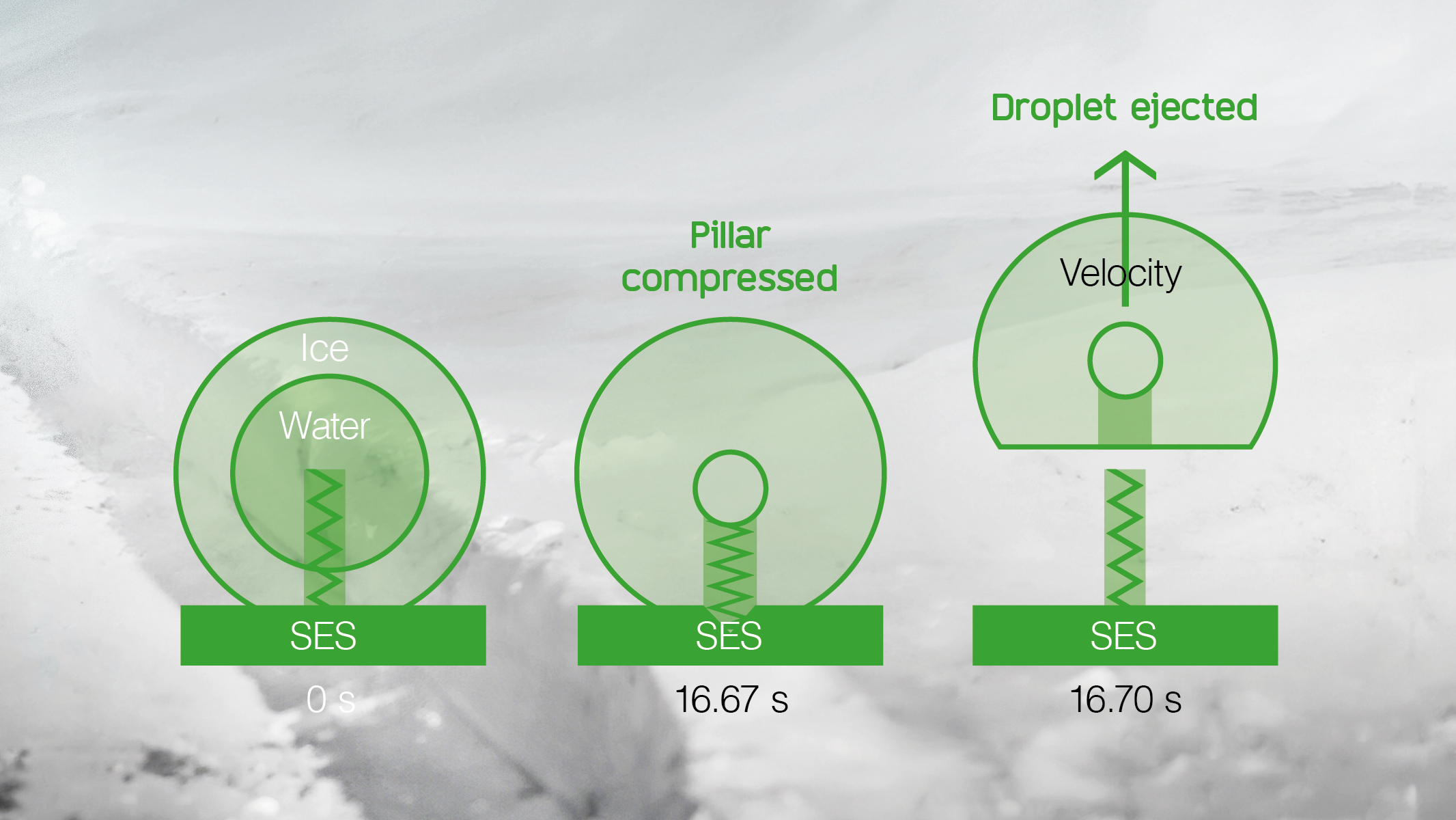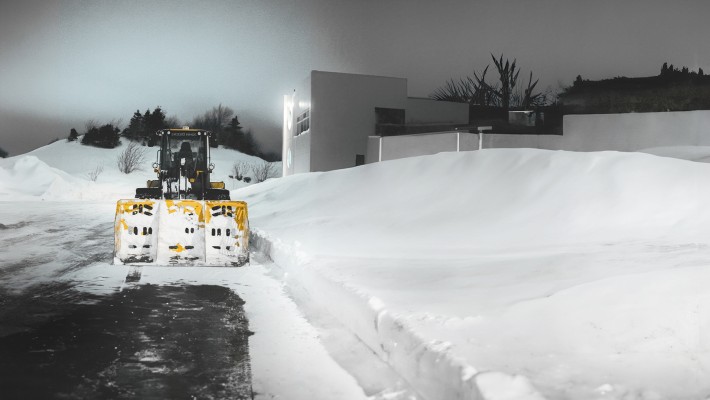Taking Aim at Dangerous Ice
New nature-inspired approach prevents ice build-ups and eliminates safety hazards
Ice can be a major safety hazard. When it settles on pavements, driveways, and stairs, it dramatically increases the risk of slips and falls which can lead to serious injuries. Build-ups on roofs can result in leaks or even structural failure. The conventional approach to ice removal involves manual labour or machinery, both of which can be costly and are frequently ineffective. But, what if there was a way to stop dangerous ice from accumulating in the first place?
A PolyU research team led by Professor Wang Zuankai, Kuok Group Professor in Nature-Inspired Engineering, and Professor Yao Haimin, Associate Professor of the Department of Mechanical Engineering, has dreamed up an amazing new solution to this age-old problem.
Their inspiration came from a unique fungus, which uses a process of osmosis-induced volume expansion to shoot out spores during reproduction. By imitating this natural mechanism, the researchers have created a special elastic surface (SES), dotted with tiny spring-like pillars that can automatically repel ice crystal.
The team’s research findings have already been published in a research paper titled “Freezing droplet ejection by spring-like elastic pillars”, which featured on the front cover of a recent issue of Nature Chemical Engineering.

The research team has developed a structured elastic surface with springlike pillars and wetting contrast that allows for the spontaneous ejection of freezing water droplets.
No batteries required
When a water droplet freezes, it gets bigger and compresses the tiny pillars on the SES. Acting like springs, the pillars store energy from the droplet’s expansion. In milliseconds the stored power is converted into kinetic energy that literally fires the droplet away from the surface. In the blink of an eye, the ice is gone, and the pillars are ready to deal with the next droplet.
The innovative structure enables the SES to expel freezing droplets, overcoming both wind and gravity without the need for any external power. This ingenious approach promises to revolutionise methods of ice removal, making them more efficient and cost-effective. Potential applications include everything from aircraft and wind turbine blades, to overhead cables.
Our research demonstrates how to effectively harness the volume expansion of freezing droplets to generate ballistic motion. This breakthrough could expand the application of energy conversion phenomena and inspire the development droplet-based energy generators and robotic catapults built from flexible materials.
~ Professor Yao Haimin
Paving the way for a self-powered device revolution
Research team member and Postdoctoral Fellow, Dr Zhang Huanhuan, is convinced that the concept of self-powered ice removal has a bright future. The team plans to continue improving the design of the SES to enable large scale manufacturing at lower costs to meet the needs of societies in colder climates.
Team leader Professor Wang, who is also PolyU’s Associate Vice President (Research and Innovation) and Chair Professor of the Department of Mechanical Engineering, is equally optimistic about the idea’s long-term impact. “We believe this prototype example of freezing droplet ejection could pave the way for a variety of self-powered solutions, from automatic de-icing technologies to renewable energy harvesting and soft robotics,” he said.

The research project is led by Professor Wang Zuankai (front row, left) and Professor Yao Haimin (front row, right). The coauthors of the research paper published in Nature Chemical Engineering, include (back row, from left) Postdoctoral Fellow Dr Zhang Huanhuan, PhD student Zhang Wei, Research Assistant Professor Dr Jin Yuankai, and PhD student Wu Chenyang.






